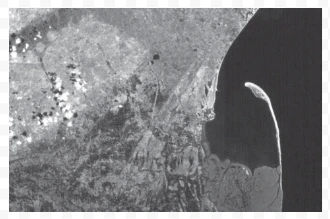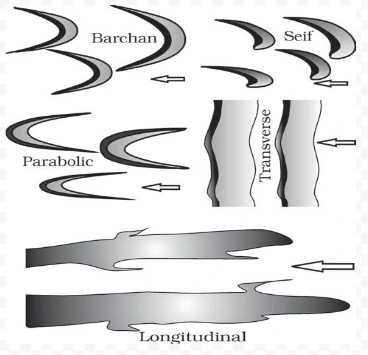![]() November 30, 2023
November 30, 2023
![]() 474
474
![]() 0
0
Landforms, including coastal features, are the different shapes and features on the Earth’s surface, and they change over time because of things like water, wind and other natural forces, creating a constantly evolving landscape.
In this chapter, we will study different landforms and geographical agents, including coastal elements which play a major role in forming these landforms.

A satellite picture of a part of Godavari river delta showing a spit
The coastal off-shore bars offer the first buffer or defense against storm or tsunami by absorbing most of their destructive force. Then come the barriers, beaches, beach dunes and mangroves, if any, to absorb the destructive force of storm and tsunami waves. So, if anything is done which disturbs the ‘sediment budget’ and the mangroves along the coast, these coastal forms will erode away leaving human habitations to bear the first strike of storm and tsunami waves.

Various types of sand dunes. Arrows indicate wind direction.
All these processes of erosion and deposition over mountains, plains, valleys, deserts and coasts, whether gradual or rapid, remind us that our planet is in a state of continuous change. By studying these natural forces and the landforms they create, we gain a deeper insight into the dynamic nature of Earth and the complex processes that shape our Earth.
This exploration of coastal and desert landforms highlights the intricate processes of erosion and deposition, showcasing the dynamic nature of our ever-evolving planet. Witness the continuous change sculpted by natural forces, offering a profound insight into Earth’s complex systems.
<div class="new-fform">
</div>

Latest Comments